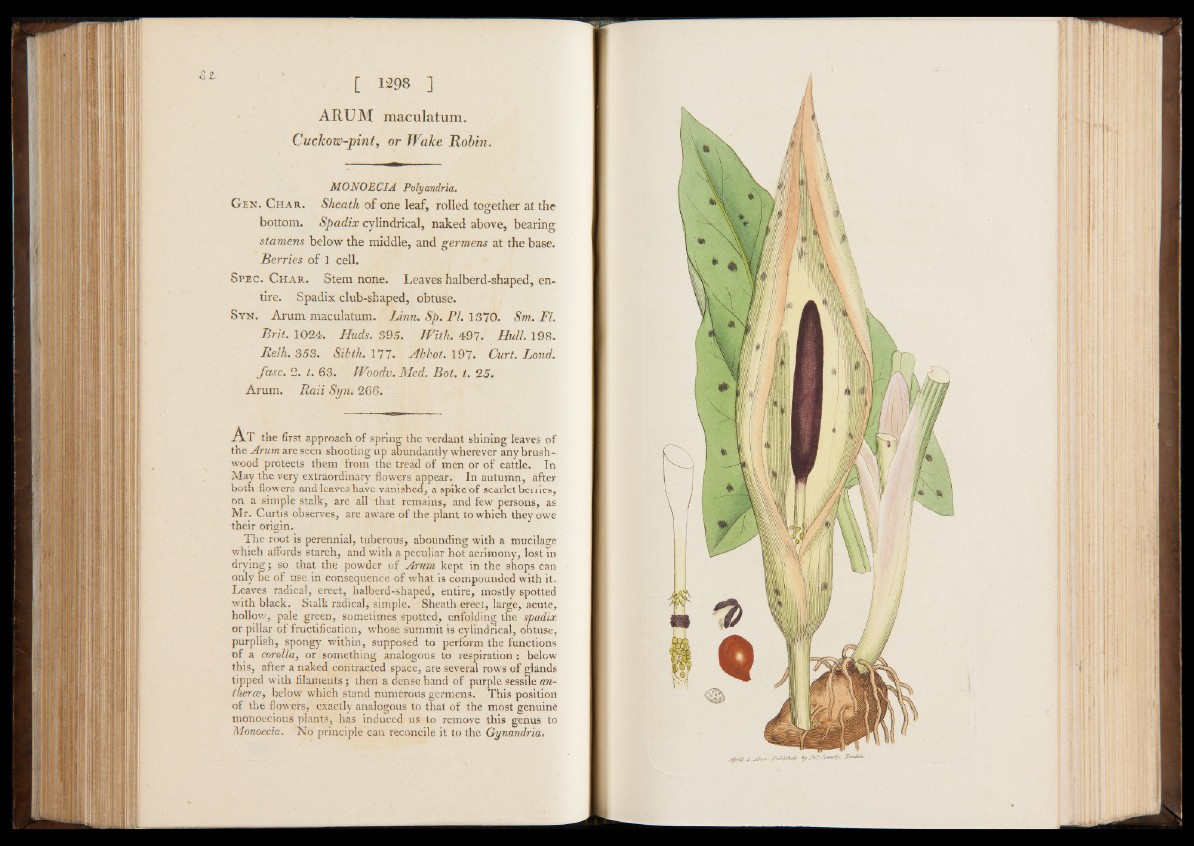
ARUM maculatum.
Cuckow-pint, or Wake Robin.
MONOECIA Polyandria.
Gen. Char. Sheath of one leaf, rolled together at the
bottom. Spadix cylindrical, naked above, bearing
stamens below the middle, and germens at the base.
Berries of 1 cell.
Spec. Char. Stem none. Leaves halberd-shaped, entire.
Spadix club-shaped, obtuse.
Syn. Arum maculatum. Linn. Sp. PI. 1370. Sm. Fl.
Brit. 1024. Huds. 395. With. 497. Hull. 198.
Relh. 353. Sibth. 177* -Abbot. 197. Curt. Bond,
fasc. 2. t. 63. Woodv. Med. Bot. t. 25.
Arum. Raii Syn. 266.
A t the first approach of spring the verdant shining leaves of
the Arum are seen shooting up abundantly wherever any brushwood
protects them from the tread of men or of cattle. In
May the very extraordinary flowers appear. In autumn, after
both flowers and leaves have vanished, a spike of scarlet berries,
on a simple stalk, are all that remains, and few persons, as
Mr. Curtis observes, are aware of the plant to which they owe
their origin.
The root is perennial, tuberous, abounding with a mucilage
which affords starch, and with a peculiar hot acrimony, lost in
drying; so that the powder of Arum kept in the shops can
only be of use in consequence of what is compounded with it.
Leaves radical, erect, halberd-shaped, entire, mostly spotted
with black. Stalk radical, simple. Sheath erect, large, acute,
hollow, pale green, sometimes spotted, enfolding the spadix
or pillar of fructification, whose summit is cylindrical, obtuse,
purplish, spongy within, supposed to perform the functions
of a corolla, or • something analogous to respiration : below
this, after a naked contracted space, are several rows of glands
tipped with filaments; then a dense band of purple sessile an-
therce, below which stand numerous germens. This position
of the flowers, exactly analogous to that of the most genuine
monoecious plants, has induced us to remove this genus to
Monoecia. No principle can reconcile it to the Gynandria.